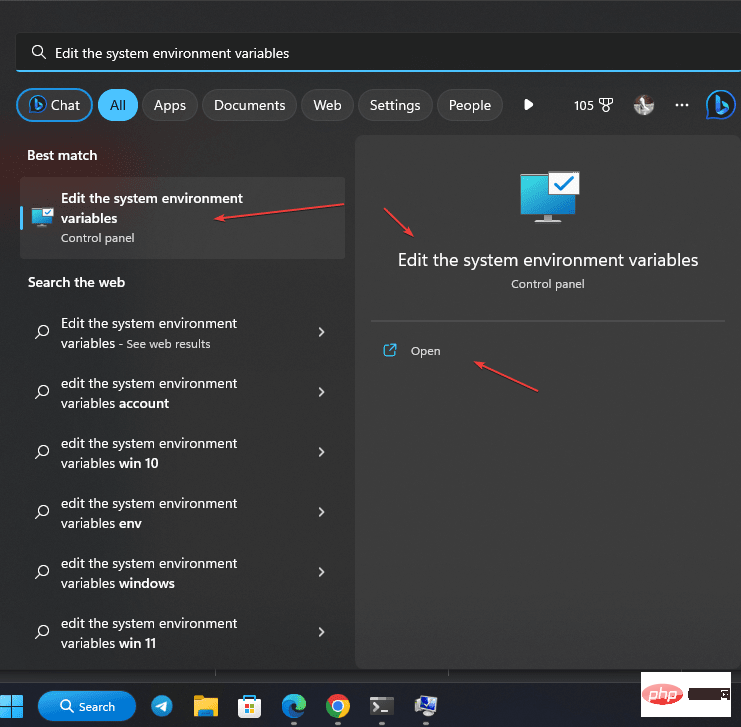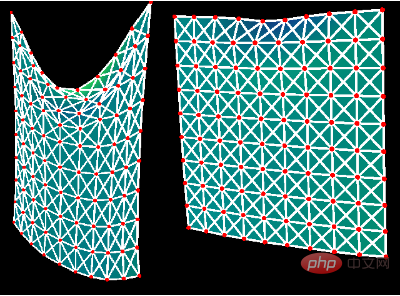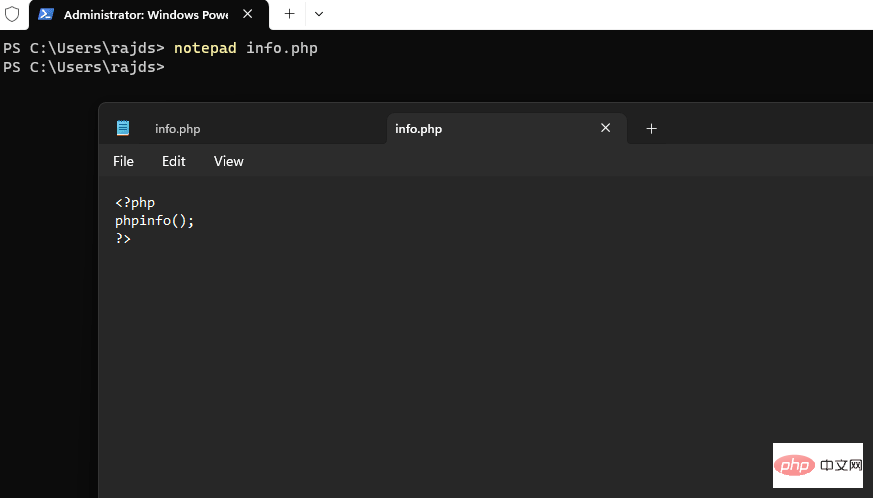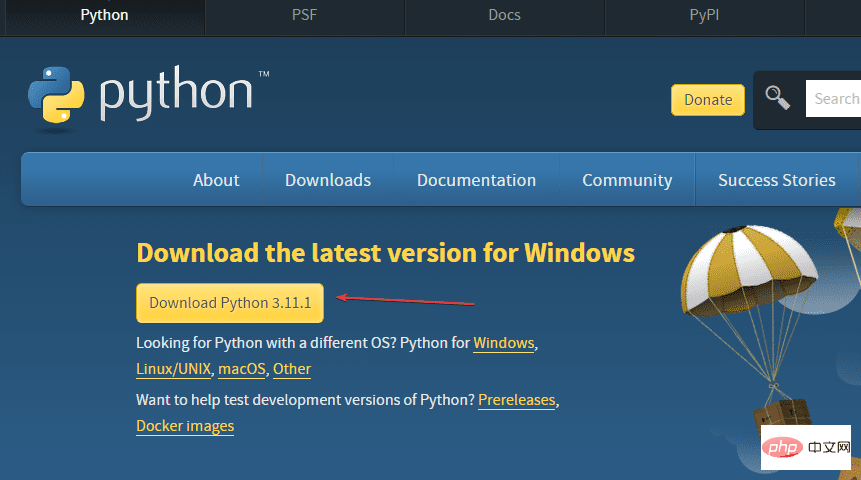Research on the underlying programming language of the Linux kernel
In today's field of information technology, the Linux kernel, as an open source operating system kernel, plays a vital role. It is a stable, reliable and efficient operating system kernel that is widely used in servers, embedded devices and various intelligent systems. The implementation of the Linux kernel is inseparable from the support of the underlying programming language. The underlying programming language directly affects the performance and functions of the Linux kernel.
In the low-level programming of the Linux kernel, C language is the most commonly used programming language, and almost all kernel codes are written in C language. The C language is efficient, flexible, and powerful, making it ideal for writing operating system kernels. This article will explore the research on the underlying programming language of the Linux kernel through specific code examples.
1. Linux kernel module programming
Linux kernel module is a dynamically loaded code that can be dynamically inserted and removed in a running Linux system. By writing kernel modules, developers can extend the functionality of the Linux kernel without recompiling the entire kernel. Below is a simple Linux kernel module example that shows how to write a simple kernel module to print "Hello, World!".
#include <linux/init.h>
#include <linux/module.h>
static int __init hello_init(void) {
printk(KERN_INFO "Hello, World!
");
return 0;
}
static void __exit hello_exit(void) {
printk(KERN_INFO "Goodbye, World!
");
}
module_init(hello_init);
module_exit(hello_exit);
MODULE_LICENSE("GPL");
MODULE_AUTHOR("Your Name");
MODULE_DESCRIPTION("A simple Hello World module");In this code, we use some macros and functions of Linux kernel module programming. The module_init macro is used to specify the initialization function called when loading the module, and the module_exit macro is used to specify the cleanup function called when the module is unloaded. printk Function is used to print information in the kernel. Finally, we use the MODULE_LICENSE, MODULE_AUTHOR, and MODULE_DESCRIPTION macros to declare the module’s information.
2. Linux kernel interrupt processing
Interrupt is an important asynchronous event processing mechanism in computer systems. The Linux kernel uses an interrupt handler to respond to interrupts generated by hardware or software. Below is an example of a simple Linux kernel interrupt handler that shows how to write a simple interrupt handler to handle a timer interrupt.
#include <linux/init.h>
#include <linux/module.h>
#include <linux/interrupt.h>
static int irq = 0;
static irqreturn_t timer_interrupt(int irq, void *dev_id) {
printk(KERN_INFO "Timer interrupt occurred!
");
return IRQ_HANDLED;
}
static int __init init_timer(void) {
printk(KERN_INFO "Initializing timer interrupt...
");
irq = 10; // Assume timer interrupt IRQ number is 10
if (request_irq(irq, timer_interrupt, IRQF_SHARED, "timer", (void *)timer_interrupt)) {
printk(KERN_ERR "Failed to register timer interrupt!
");
return -1;
}
return 0;
}
static void __exit cleanup_timer(void) {
free_irq(irq, (void *)timer_interrupt);
printk(KERN_INFO "Timer interrupt cleaned up.
");
}
module_init(init_timer);
module_exit(cleanup_timer);
MODULE_LICENSE("GPL");
MODULE_AUTHOR("Your Name");
MODULE_DESCRIPTION("A simple timer interrupt handler");在这段代码中,我们定义了一个定时器中断处理函数 timer_interrupt,用于处理定时器中断事件。然后,在 init_timer 函数中注册了定时器中断处理程序,并在 cleanup_timer 函数中清理了中断处理程序。通过这段示例代码,我们可以了解 Linux 内核中断处理的基本原理和实现方法。
3. Linux 内核内存管理
Linux 内核的内存管理是操作系统中最基础和重要的功能之一,它负责管理系统的内存资源并确保内存的分配和释放能够高效、稳定地运行。下面是一个简单的 Linux 内核内存管理的示例,展示了如何使用内核提供的函数来动态分配和释放内存。
#include <linux/init.h>
#include <linux/module.h>
#include <linux/slab.h>
static int __init memory_allocation(void) {
int *ptr = kmalloc(sizeof(int), GFP_KERNEL);
if (!ptr) {
printk(KERN_ERR "Failed to allocate memory!
");
return -ENOMEM;
}
*ptr = 42;
printk(KERN_INFO "Allocated memory, value: %d
", *ptr);
kfree(ptr);
printk(KERN_INFO "Memory freed.
");
return 0;
}
static void __exit memory_release(void) {
printk(KERN_INFO "Memory release function called.
");
}
module_init(memory_allocation);
module_exit(memory_release);
MODULE_LICENSE("GPL");
MODULE_AUTHOR("Your Name");
MODULE_DESCRIPTION("A simple memory allocation example");在这段代码中,我们使用了 kmalloc 函数来动态分配内核内存,并使用 kfree 函数来释放内核内存。通过这段示例代码,我们可以了解 Linux 内核内存管理的基本用法和原理。
结语
通过以上示例,我们深入了解了 Linux 内核底层编程语言的一些基本原理和实例。C 语言作为 Linux 内核开发的主要编程语言,在实现底层功能和优化性能方面表现出色。对于想要深入学习 Linux 内核编程的开发者来说,熟练掌握 C 语言是非常重要的。希望本文对您有所启发,也欢迎您继续深入探索 Linux 内核底层编程的世界。
The above is the detailed content of Research on the underlying programming language of Linux kernel. For more information, please follow other related articles on the PHP Chinese website!
 如何知道 Windows 上是否安装了 PHP?May 01, 2023 pm 09:31 PM
如何知道 Windows 上是否安装了 PHP?May 01, 2023 pm 09:31 PM如何在Windows10或11上检查PHP版本在学习本教程之前,请确保已在您的Windows系统上正确配置PHP。除此之外,您还需要一个命令提示符或终端访问权限。使用命令提示符或Powershell检查PHP版本识别已安装的PHP版本的最好和最简单的方法是使用其命令行工具。但是,要使用,用户必须有权访问Windows命令行应用程序,如CMD。转到Windows10或11搜索框并键入CMD或Powershell。您可以使用其中任何一个。当图标出现在这些
 Web 开发 FastAPI、Flask 和 Streamlit 的比较Apr 09, 2023 am 11:51 AM
Web 开发 FastAPI、Flask 和 Streamlit 的比较Apr 09, 2023 am 11:51 AMPython 已成为最流行的 Web 开发编程语言之一,这要归功于它的简单性、多功能性以及大量的库和框架集合。在使用 Python 构建 Web 应用程序时,开发人员有多种选择,从 Django 和 Pyramid 等全栈框架到 Flask 和 FastAPI 等轻量级微框架,再到用于数据科学应用程序的 Streamlit 等专用工具。在本文中,我们将比较三种最流行的 Python Web 框架——FastAPI、Flask 和 Streamlit——以帮助您为项目选择合适的工具。我们将探讨每个
 基于Taichi的Python高性能计算入门指南Apr 12, 2023 am 08:46 AM
基于Taichi的Python高性能计算入门指南Apr 12, 2023 am 08:46 AM自从Python编程语言诞生以来,它的核心理念一直是最大限度地提高代码的可读性和简单性。Python对可读性和简单性的追求简直达到了如痴如狂的境地。一个事实即可证实这一点:只要你在Python系统的根目录中输入命令“import this”后按下回车键,竟然马上打印出一首英文小诗,翻译成中文大致意思是:“美丽胜过丑陋,显式优于隐式。简单比复杂好,复杂比繁杂好。扁平优于嵌套,稀疏胜过密集。可读性很重要……”简单总比复杂好,可读性很重要。毫无疑问,Python确实在实现这些目标方面非常成功:它是迄今
 如何在 Windows 10 上使用命令提示符安装 PHPMay 08, 2023 pm 05:13 PM
如何在 Windows 10 上使用命令提示符安装 PHPMay 08, 2023 pm 05:13 PM使用命令提示符或PowerShell在Windows上安装PHP安装ChocolateyChoco包管理器我尝试了Windows默认包管理器Winget,但无法通过它安装PHP。因此,剩下的另一个最佳选择是使用流行的Chocolatey包管理器。但与Winget不同的是,Choco默认情况下不存在于我们的Windows系统中,因此我们需要在我们的系统上手动安装它。转到您的Windows10或11搜索框并键入CMD,出现时选择“以管理员身份运行”将给定的命令复制
 html和css算编程语言吗Sep 21, 2022 pm 04:09 PM
html和css算编程语言吗Sep 21, 2022 pm 04:09 PM不算。html是一种用来告知浏览器如何组织页面的标记语言,而CSS是一种用来表现HTML或XML等文件样式的样式设计语言;html和css不具备很强的逻辑性和流程控制功能,缺乏灵活性,且html和css不能按照人类的设计对一件工作进行重复的循环,直至得到让人类满意的答案。
 在 Windows 11 或 10 上安装最新 Python 的 2 种方法——GUI 和 CMDApr 13, 2023 pm 11:31 PM
在 Windows 11 或 10 上安装最新 Python 的 2 种方法——GUI 和 CMDApr 13, 2023 pm 11:31 PM在 Windows 10 或 11 上安装 Python 3在这里,我们讨论两种设置 Python 的方法,一种是使用图形安装向导,另一种是借助提示符或 Powershell(终端)中的命令。使用图形用户界面:1.下载Python最新版本众所周知,默认情况下,Windows 中不包含 Python 来编译我们基于它的程序。因此,请访问官方网站python.org ,通过单击“下
 Python Web3 开发:用 Brownie 部署智能合约May 19, 2023 pm 05:34 PM
Python Web3 开发:用 Brownie 部署智能合约May 19, 2023 pm 05:34 PMPython是最通用的编程语言之一:从研究人员运行他们的测试模型到开发人员在繁重的生产环境中使用它,几乎在每个可能的技术领域都有使用案例。在今天的指南中,我们将了解Brownie,一个基于Python的工具,用于编写和部署智能合约。准备安装Python3以太坊节点文本编辑器终端什么是Brownie?智能合约开发主要由基于JavaScript的库主导,如web3.js、ethers.js、Truffle和Hardhat。Python是一种通用的、高度使用的语言,也可用于智能合约/web3的开
 30 个数据工程必备的Python 包Apr 12, 2023 pm 04:58 PM
30 个数据工程必备的Python 包Apr 12, 2023 pm 04:58 PMPython 可以说是最容易入门的编程语言,在numpy,scipy等基础包的帮助下,对于数据的处理和机器学习来说Python可以说是目前最好的语言,在各位大佬和热心贡献者的帮助下Python拥有一个庞大的社区支持技术发展,开发两个各种 Python 包来帮助数据人员的工作。在本文中,将介绍一些非常独特的并且好用的 Python 包,它们可以在许多方面帮助你构建数据的工作流。1、KnockknockKnockknock是一个简单的Python包,它会在机器学习模型训练结束或崩溃时通知您。我们可以


Hot AI Tools

Undresser.AI Undress
AI-powered app for creating realistic nude photos

AI Clothes Remover
Online AI tool for removing clothes from photos.

Undress AI Tool
Undress images for free

Clothoff.io
AI clothes remover

AI Hentai Generator
Generate AI Hentai for free.

Hot Article

Hot Tools

SublimeText3 Chinese version
Chinese version, very easy to use

SublimeText3 English version
Recommended: Win version, supports code prompts!

MantisBT
Mantis is an easy-to-deploy web-based defect tracking tool designed to aid in product defect tracking. It requires PHP, MySQL and a web server. Check out our demo and hosting services.

Dreamweaver CS6
Visual web development tools

WebStorm Mac version
Useful JavaScript development tools






